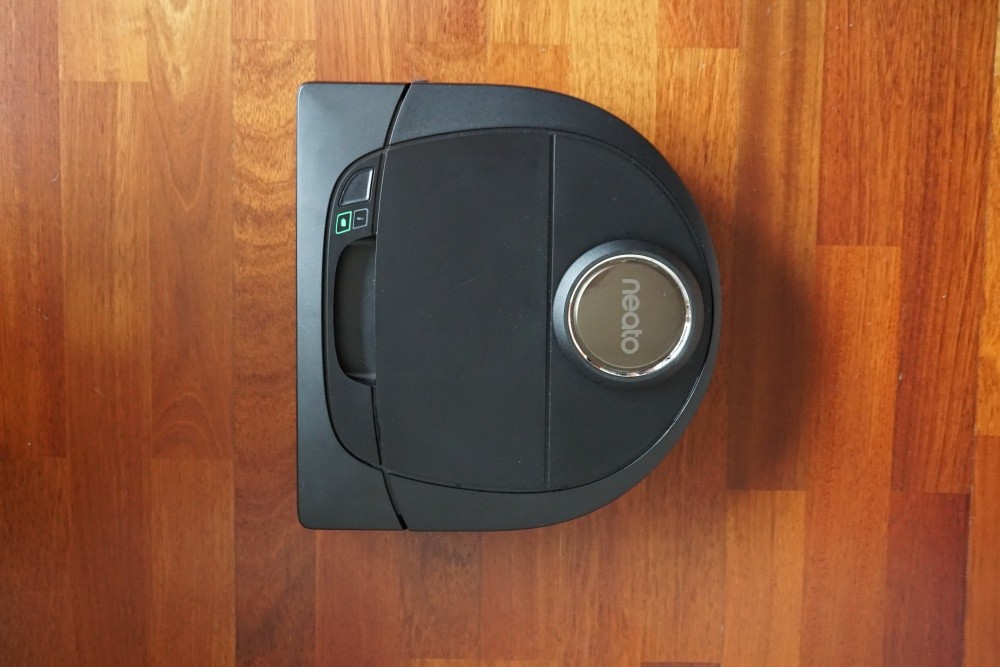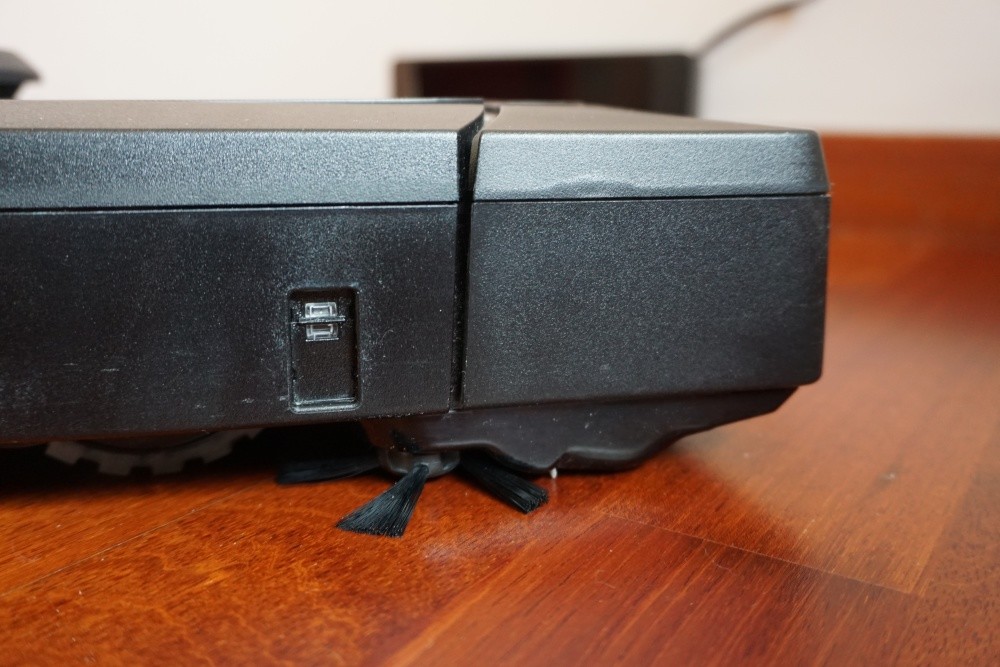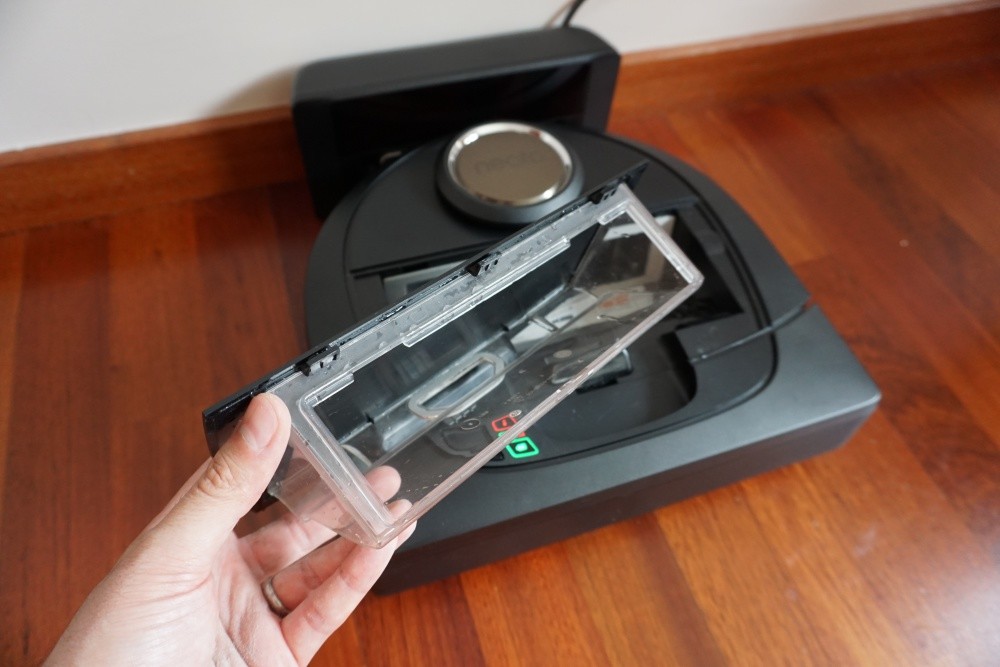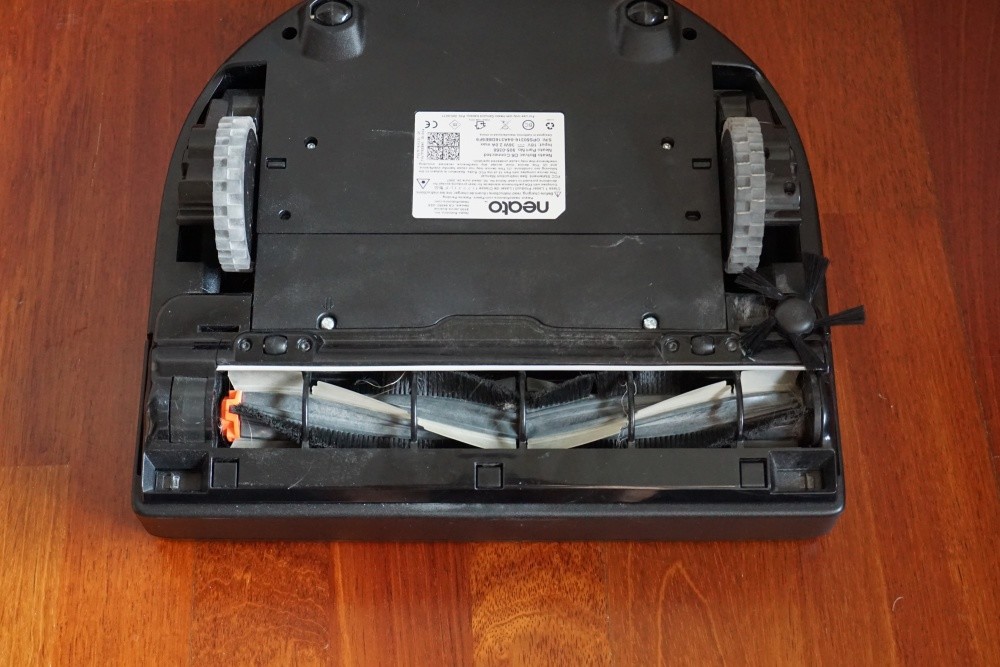The sector of robot vacuum cleaners is populated by dozens of alternatives, which are usually divided into two different ranges. On the one hand there is the entry range with cheaper models, while on the other hand we have a high range with much higher prices, but with a greater number of technologies and innovation.
Today we are going to analyze one of these high-end vacuum cleaners, the Botac D5 Connected from Neato, which has been the flagship of the company until the presentation of the D7 Connected a few months ago at the IFA 2017 in Berlin. We have been testing him for a few weeks to see what his weapons are to make a place in your home over his eternal rival, the Roombas of iRobot.
The great advantages of this D5 Connected are above all its laser navigation system, which they have developed since being the first to adopt it in 2010. It also has a characteristic D-shaped design that makes it stand out from the competition, as well as a deposit that, with 0.7 liters, is one of the most capacity in the market.

Botvac D5 Connected, technical specifications
But before moving on to fully discuss our experience using Neato’s robot vacuum cleaner, let’s start by reviewing its technical specifications, its main characteristics and its price.
| SPECIFICATIONS | NEATO BOTVAC D5 CONNECTED |
|---|---|
| DIAMETER | 70 centimeters |
| HEIGHT | 10 centimeters |
| WEIGHT | 3.4 kg |
| DEPOSIT CAPACITY | 0.7 liters |
| CLEANING MODES | Delicate navigation |
| BATTERY | 4.200 mAh |
| AUTONOMY | 90 minutes |
| LOADING TIME | Three hours |
| ACCESSORIES | Delimiters, combined brush, side brush, brush kit, shovel brush, standard filter, high performance filters, |
| PRICE | 557 dollars |
A recognizable and simplified design to the maximum
The Botvac D5 Connected is a robot vacuum cleaner whose suction form consists of a central rotating brush perfect for carpets and carpets, because they manage to brush the fibers and remove more dirt. They accompany a rotating brush to each of their sides with which to drag towards the central brush dirt that has both sides.

Its design maintains one of the greatest hallmarks of all the Neato vacuum robots, that of keeping the design in the form of D. With it, the vacuum cleaner has two corners in the front part with which it can be better adjusted to those of your house without having to delegate completely in the making of the side brushes.
The vast majority of devices of this type that are on the market have the same round shape. For that reason, beyond the fact that D’s form is more or less practical is the fact that with it Neato has achieved the most difficult of all in a sector so populated: to be distinguished at first sight without having to stop at look at the logo on the machine.
For the rest, we still have a vacuum cleaner with a design almost identical to that of its predecessors, with a round projection on the upper part in which the logo is placed. There is also a slit that helps to extract the size under which we have the filter and the deposit of 0.7 liters, one of the largest in the market.
To the left of this slit we have a single button and two luminous indicators. The first of the indicators is an i that shows different warnings that can be differentiated by the frequency of its intermittence. It is a simple method to show information, but if you do not have a good head it takes you over and over again to the manual to understand what you are wanting to say.

Perhaps a digital screen would be more useful when it comes to showing clearly possible error messages that may arise, although it is true that betting on it would increase the difficulty in handling and probably the price of the device and would lose simplicity. Therefore, get used to the confidence that the most important notices will also reach the mobile.
There is also another luminous indicator that informs you of the state of the battery, and next to them a physical action button that we have to press to start the aspirate. This makes it extremely easy to use, just press the button and you forget, the vacuum cleaner will take care of the rest. In this aspect, the simplicity of the D5 makes you gain integers.
In the lower part we have rubber wheels to avoid damaging delicate floors and brushes. The front part of the vacuum cleaner is slightly separated, and on both sides it has two touch sensors that allow it to react when it hits something. The diameter of the D5 Connected is 70 centimeters, and its weight is 3.4 kilograms.
As for the height, this is 10 centimeters, which makes a few meters, even a few centimeters higher in some cases than other devices like some Roombas of iRobot. In any case, 10 centimeters are usually low enough for the D5 to pass without problems below most tables even if they have a lower shelf. At least in my house we have not had problems with height.

You may also like to read: Xiaomi Mi Robot Vacuum 2: cleaner, faster, more smart, and more expensive
Good navigation, but improvable cleaning
Neato boasts a lot of having been the first company to bet on laser navigation systems, and has developed over time. With it, your robots are able to create a map of our house to know how to move with it, optimizing the aspirate and not passing more times than necessary by the same site.
This means that as soon as you put it in motion you realize that the robot knows very well where it is, and that it does not need to go crashing against the walls to make its way. This also allows you not to go from one room to the next until you finish, something that ends up helping you save a lot of time in front of simpler devices.
It also manages to convey the feeling that you just have to put your robot in motion and not worry anymore. He only leaves his charging station, goes through the house and automatically returns when he considers that he has finished even though he is at the other end of the house. If your battery is about to run out, you also go back home, and if necessary, then work from where you left off.
I said that it comes back when it considers that it has finished because that is the big problem that I have found with this robot: it is a proof that the vacuum robots have not matured enough yet. I mean that having a floor between 70 and 80 square meters, the robot only cleans me on average an area of about 32 meters in an entire hour of operation.

Personally I still use one of those hand-held vacuum cleaners without wires and with little battery, but in the 20 minutes that I usually give autonomy I have time to clean the entire house without problems. On the other hand, with one hour of operation the Botvac cleans more or less half of the surface. And I’m not talking about what you can not do with obstacles, but there are parts of the house that you hardly pass through.
As for how it is handled with furniture, I was very pleasantly surprised that it is handled well in especially complicated areas. For example, you have no problem cleaning between the legs of the chairs under the table. Even so there are still areas where it does not happen, although it could be done, as between a wall and a sofa that for some reason does not go in despite having plenty of space.
The power at the time of sucking the robot also left me a little cold. The thickest pet hair can be cleaned without too much trouble, but it has some problems when it comes to sucking smaller and heavier dirt. That often leaves some area of the house where it feels like it could have been cleaned much more thoroughly.
Therefore, between several areas that remain uncleaned and other dirt that does not finish sucking, my feeling is that the Botvac D5 Connected is an excellent device to keep the house fairly clean during the week. But if you want to do a thorough cleaning you will need a more conventional vacuum cleaner.
With a capacity of 0.7 liters, the deposit of the D5 Connected is one of the largest on the market, and it shows that it is enough to store dirt a standard floor of about 80 square meters. Yes, considering that in my case almost half of the surface is left to be cleaned, I always have the doubt of whether it would be enough in the case of being more efficient with the surface covered.

Even so, it should not be overlooked that the operation of this robot depends to a great extent on each house. This means that if you are going to clean wider spaces and without too many holes for which the robot is not going to fit your experience, it may be totally different. I’m thinking for example in offices, sure that in those cases there is not much problem.
Another problem that I have encountered with this device is also shared by other robot vacuum cleaners. They are still given especially badly bright and dark floors. And if you combine them, I do not even tell you anymore. In one of the first tests I did, I was completely stuck in the base of a standing fan, one of those that is made of shiny black plastic.
But part of that just got stuck again. I left home leaving the vacuum cleaner running but without noticing the microphone cable that was on the floor next to the tower of my computer. When I returned three hours later I saw that the cable had tangled in the brush, and the vacuum cleaner was whistling agonizingly begging for rescue. But come on, apart from this funny event, it has not given me any more problems.
And finally there is the issue of autonomy. The D5 Connected has never been short of battery, and with a full charge can be running for 90 minutes without problems. This will be more than enough for most houses, and if for some reason it falls short, it will return to the station and resume cleaning once it has been loaded.
You can also control it from the app
Although it does not have the improvements that have been introduced in the new D7 Connected presented in September, such as the visualization of the map of the house that the robot has made, the app with which you can access the D5 Connected is more than enough to configure it and control the basic functions of the robot.
First of all it helps you to receive notifications that notify you when the robot has finished cleaning. In its main screen you have a battery indicator and a start button to start your robot vacuum cleaner wherever you are. You also have a configuration button, another cleaning option, and one more to access the statistics of all the times you have used the Botvac.

In the cleaning options menu you can choose between two modes, that of cleaning the entire house or only one area. With the second option you can tell your robot to clean only one room. You also have the option Special care, activating your robot will go more slowly and be more careful, a good alternative for when you have surfaces or especially delicate carpets at home.
In the settings of the robot you really can not do much except edit its name or connect it to a WiFi network. For the rest, the panel is limited to allowing you to adjust the periodicity of the reminders with which to warn yourself of when it is time to empty the tank, change its filter or do the same with the brushes.
And finally there is the cleaning history page. In it first of all it shows you a graphic with the time that it has taken each time you have put it in cleaning your house. As you can see in the capture, there is a day that took three hours despite not cleaning more than one square meter. As I mentioned before, that’s because I activated it from outside the house and just got started getting tangled with a cable.
Just below you have another graph with the history of the area of the house that you have cleaned every time you have turned it on. In it you can see how in my case it has usually cleaned about 34 square meters of house. A very regular cleaning, yes, but that does not stop being less than half of the surface of my apartment of 80 square meters.



